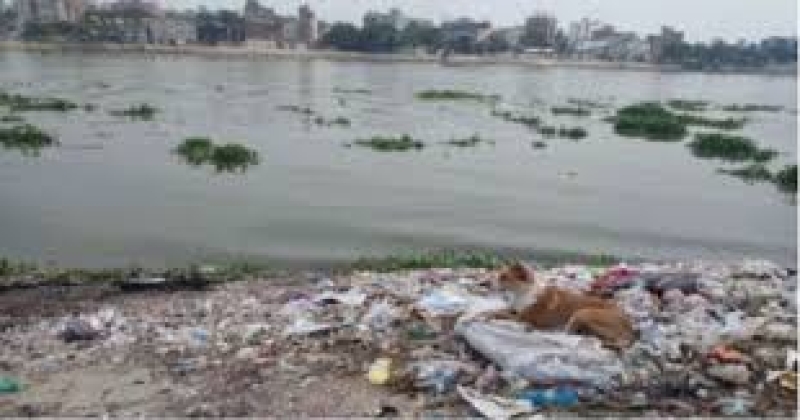- Khaleda now not fit for travelling: Medical Board |
- Panchagarh records lowest temperature 10.5°C so far this year |
- Christmas returns to Bethlehem after two years of Gaza war |
- কলাপাড়া মুক্ত দিবসে এবার সাড়া নেই কার |
- One killed, two injured in attack at Ctg meeting over marriage |
250 Sewage Connections Polluting the Buriganga River

Approximately 250 pipelines are discharging untreated sewage directly into the Buriganga River over just six kilometers, accounting for 30-40% of the river’s pollution.
A study by the River and Delta Research Centre (RDRC) revealed that these sewage lines, from Sheikh Russel School in Kamrangirchar to Farashganj Bridge, include 137 connections on the left bank (Old Dhaka) and 114 on the right (Keraniganj).
RDRC chairman Mohammad Azaz emphasized that diverting these pipelines to the Pagla Sewage Treatment Plant (STP) could significantly reduce pollution, estimating a small-scale project would cost around Tk 25-30 crore. “Stopping these 251 connections could cut 30-40% of the Buriganga’s pollution,” he stated.
Prof. Ahmad Kamruzzaman Majumder from Stamford University highlighted untreated sewage, industrial waste, and water vehicle discharge as the main pollution sources. He stressed that without addressing sewage discharge, the river will remain polluted and unusable.
Majumder recommended establishing small to medium STPs to manage the raw sewage effectively. He noted that while certain water quality parameters are within national standards during the June-September period, they often exceed permissible levels at other times.
The study also found 257 waste dumping points along the river, with 148 on the right bank and 109 on the left. Additionally, 93 locations are discharging untreated industrial effluent, affecting both banks.
Further pollution sources were identified in nearby rivers, with 99 untreated sewage connections to the Turag River and 10 to the Balu River. Azaz warned that the Turag, which supplies 90% of the Buriganga’s water, is also heavily polluted, especially in Gazipur.
He urged the government to implement a comprehensive action plan to eliminate untreated sewage and waste dumping along the Buriganga and Turag rivers to restore their health. According to the World Health Organization (WHO), the Buriganga is one of the most polluted rivers globally, with over 60,000 cubic meters of toxic waste dumped daily.

